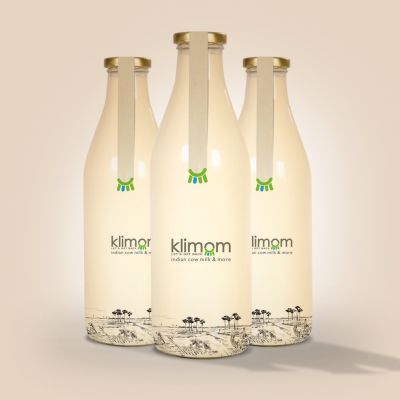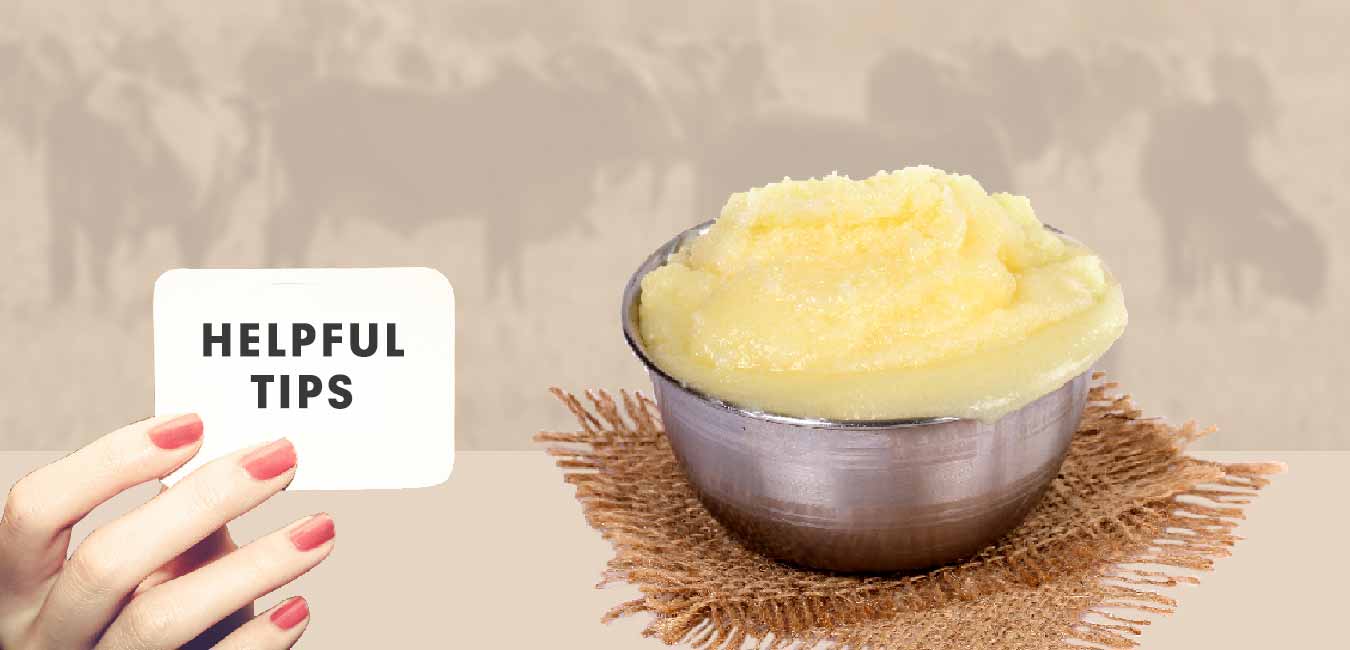10 tips for making good Indian cow ghee even better


“Good, better, best. Never let it rest. ‘Til your good is better and your better is best.” St. Jerome
Such an apt quote for every aspect of life. Even more so when it comes to the food we eat. It’s never worth compromising on health and nutrition when we have access to the best quality food. A little bit of attention to what goes into our tummy can go a long way. That dream of being “fit and fine till I’m 99” is not so unrealistic after all.
Every culture/country has its own list of superfoods that are must-haves. There seems to be a tendency to go after foods that become “fads” but are not local in terms of their origin. Why go through all the headache when it’s proven that regional foods are the best for us. The ones that our ancestors have been consuming for centuries and have benefited from.
I’m sure it didn’t take you too long to guess what regional superfood we are going to be talking about. Of course, it has to be Ghee. This is one item that’s there in almost every Indian household and serves a million different purposes.
We’re not going to get into each of those uses. Instead, let’s talk about how we can make this magical ingredient even better so we get the most out of it.
Here we have 10 tips to make Indian cow ghee even better.
How best to make ghee :
The difference between good and great ghee certainly lies in the process of making it. Read on to know what I mean.
1. Higher the quality of the milk, better the ghee :
Like with any food item, the source of it makes all the difference. Ghee is a dairy product and the best quality ghee comes from the best quality of milk. A2 cow’s milk that is sourced from animals that are grass-fed and well cared for is a perfect starting point to get ghee.
When the animals are not injected with hormones and they consume organically grown grass free from pesticides, the quality of their milk is also superior. This, in turn, ensures that the ghee made from it is as pure as it can get.
2. The extraction process makes all the difference :
There are many different ways of making ghee. A very common one is to collect milk cream and to directly heat it. If this is how you make ghee at home, you are missing an important step. Fermentation.
When you add a natural yogurt culture to the cream/milk, it gives the right texture, taste, and aroma to the end product. The next time you start off making some ghee, remember to add a generous helping of yogurt (dahi/curd) and let the mix sit for a couple of hours. Once the fermentation takes place, you can churn the contents to separate the butter which is then converted into ghee.
The butter you get from this process can also be used as is for baking or spreading on your parathas.
3. Just the right amount of heat :
If you decide to turn the butter into ghee, then you will need to place the contents in a heavy bottomed pan. This step is quite simple if you pay attention to one important detail – the temperature. The pan shouldn’t overheat too quickly otherwise it will result in burnt residue and in turn, your ghee will taste, well, burnt.
Start off with a medium flame and in some time reduce it to low. The trick is to get a lovely golden brown colour on the milk solids that start to settle on the bottom. Don’t allow that sediment to become too dark.
4. Nothing goes to waste :
Do you usually throw out the milk solid residue that is left behind in the ghee making process? Did you know that you can make delicious sweets from the leftovers in the pan? Take a handful of crushed nuts, powdered sugar, and some wheat flour and add in the milk solids. You can turn this mixture into yummy laddoos. If that is too much work, just add 2 spoonfuls to a bowl hot rice and I promise you will be licking your fingers.
How best to store ghee :
Ghee is known for its shelf life. It stays quite well without becoming rancid like some other commonly used oils in the kitchen. It’s important that you store it the right way to get the most out of it.
5. Store in glass containers :
Glass is an excellent medium to store any food product. What makes it so great you might ask. Glass doesn’t react with the food and helps retain its essence. Plastic, on the other hand, is known to leach harmful chemicals into the food. Steel doesn’t have that disadvantage, however, it can react when it comes into contact with some acidic foods. While both plastic and steel provide the usual protection from dust and air, it’s always better to stick to glass.
Ghee is an expensive ingredient and most people like to store it for long period of time. The best way to preserve its essence for a longer period of time is to keep it in a glass jar.
6. Store at room temperature or refrigerate?
The short answer to that is that ghee stays just fine at room temperature. However, there are a couple of conditions for that.
On average, you can keep your ghee outside for 3-6 months. If you need to store it for a longer period of time, you can even refrigerate it for up to a year. There’s only one possible problem here – how can you resist the goodness of ghee for so long? Finish up that jar already!
7. Enhance the flavor :
While you might argue that ghee doesn’t need any flavor enhancement, there’s always room to experiment and try some variations. If you can relish flavored butter, why not flavored ghee? Give it an Indian twist by adding curry leaves or make it more international by using rosemary or thyme. Enjoy the delicious spreads with your toast or parathas!
How best to use ghee :
Some use ghee for cooking, some add it to their rotis or rice, some use it to treat skin ailments. There are varied uses of this one ingredient. A few quick tips on some of the best ways to incorporate ghee into your life that make it go from good to great.
8. Have it first thing in the morning :
Ghee is a favorite in Ayurveda. It’s an integral part of a lot of the Ayurvedic procedures and medicines as well. One of the highly recommended practices is consuming ghee first thing in the morning, on an empty stomach. It is said to lubricate every tissue and cell in our bodies. Right from immunity to glowing skin, this practice is said to bring in absolute harmony to your body.Why first thing in the morning? That is the time when your body is preparing for the day to nourish your body and give you the energy for all the tasks of the day. Make a great start every single day!
9. Why cook with anything else :
Too much of anything is bad and so is too much of ghee. But we worry so much about consuming too much that we don’t use ghee enough. Instead, we end up using other oils that are not great for our body. Try replacing all regular oils with ghee. Even for cooking. Even for deep frying. Ghee has a very high smoke point and is an excellent fat for cooking, especially Indian foods.
10. Bye bye chemical filled cosmetics :
Ghee has a rightful place in our kitchen. And, also our dressing table. You read that right. Use it for chapped lips, dry skin, small bruises. You don’t need to empty out your wallet to buy expensive creams that are filled with chemicals you don’t need. Instead use the most natural product, ghee. Your skin will have a lot to thank you for.
That’s how my friends, you take something that is great and makes it even better.



